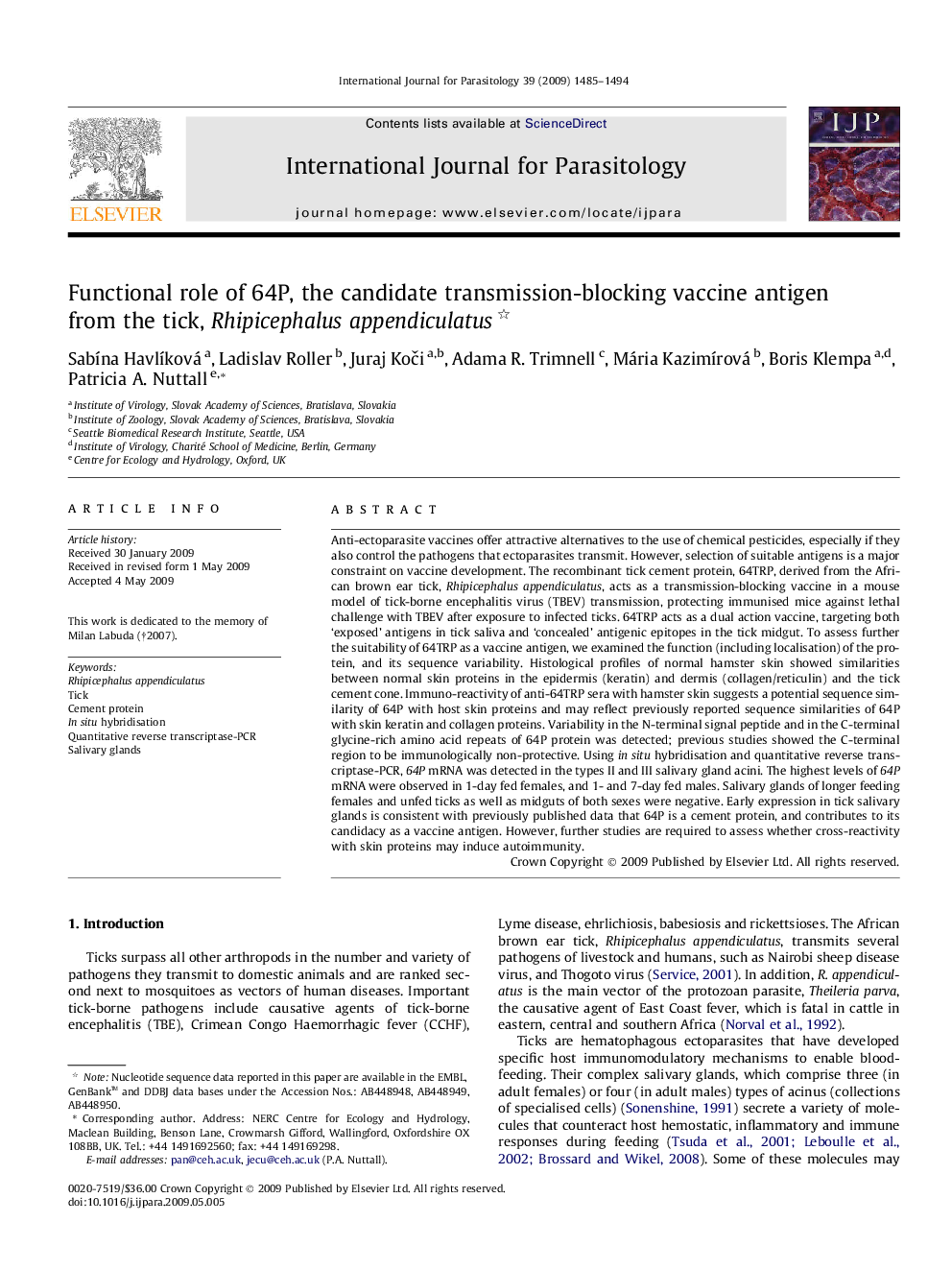| کد مقاله | کد نشریه | سال انتشار | مقاله انگلیسی | نسخه تمام متن |
|---|---|---|---|---|
| 2436737 | 1107344 | 2009 | 10 صفحه PDF | دانلود رایگان |

Anti-ectoparasite vaccines offer attractive alternatives to the use of chemical pesticides, especially if they also control the pathogens that ectoparasites transmit. However, selection of suitable antigens is a major constraint on vaccine development. The recombinant tick cement protein, 64TRP, derived from the African brown ear tick, Rhipicephalus appendiculatus, acts as a transmission-blocking vaccine in a mouse model of tick-borne encephalitis virus (TBEV) transmission, protecting immunised mice against lethal challenge with TBEV after exposure to infected ticks. 64TRP acts as a dual action vaccine, targeting both ‘exposed’ antigens in tick saliva and ‘concealed’ antigenic epitopes in the tick midgut. To assess further the suitability of 64TRP as a vaccine antigen, we examined the function (including localisation) of the protein, and its sequence variability. Histological profiles of normal hamster skin showed similarities between normal skin proteins in the epidermis (keratin) and dermis (collagen/reticulin) and the tick cement cone. Immuno-reactivity of anti-64TRP sera with hamster skin suggests a potential sequence similarity of 64P with host skin proteins and may reflect previously reported sequence similarities of 64P with skin keratin and collagen proteins. Variability in the N-terminal signal peptide and in the C-terminal glycine-rich amino acid repeats of 64P protein was detected; previous studies showed the C-terminal region to be immunologically non-protective. Using in situ hybridisation and quantitative reverse transcriptase-PCR, 64P mRNA was detected in the types II and III salivary gland acini. The highest levels of 64P mRNA were observed in 1-day fed females, and 1- and 7-day fed males. Salivary glands of longer feeding females and unfed ticks as well as midguts of both sexes were negative. Early expression in tick salivary glands is consistent with previously published data that 64P is a cement protein, and contributes to its candidacy as a vaccine antigen. However, further studies are required to assess whether cross-reactivity with skin proteins may induce autoimmunity.
Journal: International Journal for Parasitology - Volume 39, Issue 13, November 2009, Pages 1485–1494